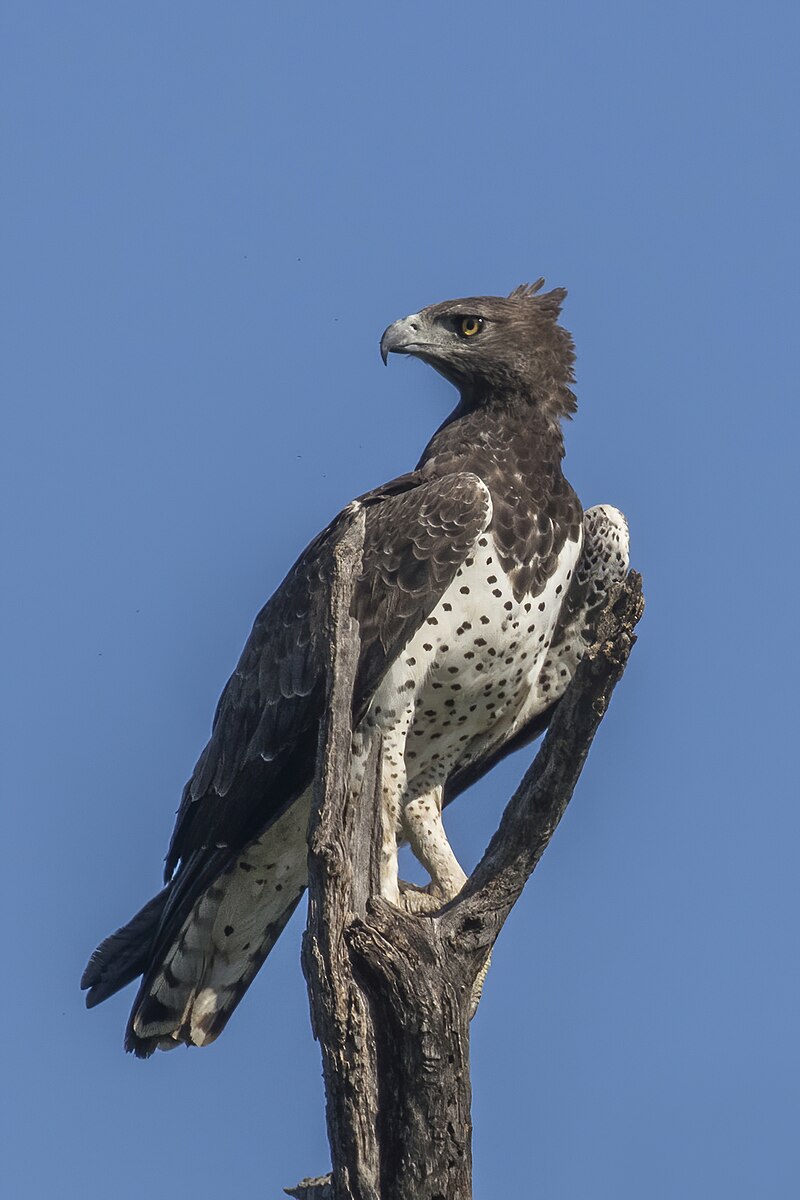Martial eagles, also known as Polemaetus bellicosus, are large birds of prey found in various parts of Africa. While these impressive raptors are known to inhabit a range of habitats, including semi-desert regions, they are not strictly desert-dwelling birds. In this blog post, we’ll explore the habitat preferences and distribution of martial eagles, with a focus on whether they can be found in desert environments.
Habitat Preferences of Martial Eagles
Martial eagles are primarily found in open woodlands, wooded savannas, and thornbush habitats. They prefer areas with a mix of trees and open spaces, which provide them with suitable hunting grounds and nesting sites. These birds are known to avoid closed-canopy forests and hyper-arid desert environments.
In southern Africa, martial eagles have adapted to more open habitats, such as semi-desert and open savanna with scattered trees, as well as wooded hillocks. In the desert areas of Namibia, they have been observed utilizing ephemeral rivers, which are temporary waterways that flow only during the rainy season.
Hunting and Feeding Habits
 Image source: Martial eagle by Charles J. Sharp
Image source: Martial eagle by Charles J. Sharp
Martial eagles are opportunistic carnivores, preying on a variety of mammals, birds, and reptiles. Their diet includes small antelopes, monkeys, young domestic livestock (such as goats and lambs), water birds (like herons, storks, and geese), and even potentially dangerous prey like monitor lizards, venomous snakes, jackals, and medium-sized wild cats.
These powerful hunters are known for their impressive hunting skills, using their sharp talons and hooked beaks to capture and kill their prey. They are solitary birds and do not tolerate the presence of other eagles in their territory, except during the breeding season.
Breeding and Nesting
Martial eagles are relatively solitary birds and are known to be shy, avoiding human interaction. They are also relatively quiet, with their vocalizations limited to a ‘hlueee-oh’ call when near the nest or during displays, and a series of ‘klee-klee-klee-kloeee-kloeee-kulee’ calls.
These birds have a low reproductive rate, which can be a challenge for their long-term survival. They typically lay one or two eggs per breeding season, and both parents share the responsibilities of incubation and chick-rearing.
Conservation Status and Threats
Unfortunately, martial eagles face several threats to their survival, including hunting, habitat loss, and collisions with power lines. Farmers often kill these birds because they hunt domestic animals, and they are also sometimes poisoned or shot.
According to the IUCN Red List, the population of martial eagles in South Africa, Lesotho, and Swaziland is estimated to be around 800 pairs, while the population in Namibia includes less than 350 pairs. The overall population trend is decreasing, and the species is currently classified as Endangered (EN).
Conclusion
In summary, while martial eagles can be found in semi-desert and open savanna habitats, they are not strictly desert-dwelling birds. These impressive raptors prefer a mix of wooded and open areas, and they avoid hyper-arid desert environments. Their conservation status is a concern, and efforts are needed to protect these magnificent birds and their habitats.
References:
– Carnivora.net – Martial Eagle vs Marabou Stork
– Kruger Park – Martial Eagle
– Carnivora.net – Martial Eagle (Polemaetus bellicosus)
– Animalia.bio – Martial Eagle
– Wikipedia – Martial Eagle

